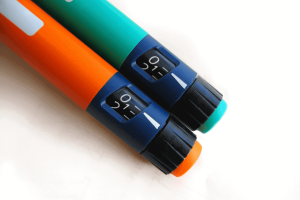The Dos and Don’ts of Blood Sugar Logging
Keeping an up-to-date blood sugar log is one of the best steps you can take to manage your diabetes as well as your overall health. Here’s the lowdown on how to organize your log so that you–and your doctor–can get the most out of your sugar data.
DO: Organize your sugars according to when you check them.
According to the Mayo Clinic, most diabetes patients check their blood sugars when they wake up in the morning, after meals, and before they go to bed. Your log can be set up this way, too. To begin, create a column at the top of your log for each time your check your sugars. For example, you could include columns for “morning,” “afternoon,” and “night,” or “breakfast,” “lunch,”and “dinner.” By keeping tabs on your sugars this way, you’ll be able to identify important patterns. For example, you may notice that your blood sugar is always high when you wake up in the morning, a issue you may want to discuss with your doctor.
DON’T: Write your sugars in one column.
A list of sugar readings in one column looks just like a long list of numbers–because that’s all it is. Without any context, it’s impossible for you and your doctor to understand what your sugar data means. Your log may indicate that your sugars climbed to 201, but without any other details, it’s difficult to know why that high occured. This also prevents you from learning how to prevent blood sugar spikes in the future.
DO: Look at online resources.
If you’re afraid of a paper log getting lost in the shuffle on your desk, an online blood sugar log may be for you. My Diabetes Home is a diabetes management platform available on your desktop or as an app for your smartphone and tablet. To help you pinpoint specific problem areas in your sugar log, My Diabetes Home also provides an easy-to-read chart that includes your highest and lowest sugar levels, along with an estimated A1C reading.
DON’T: Forget your log at home.
Now that your sugar data is organized and ready to go, it’s important to bring all this information to your next diabetes checkup. Not only will having this information ready save you time in the exam room, but it will also free up several extra minutes for you and your doctor to discuss new treatment options or any questions you may have. If you use an online log, it’s easy to email your data to your health care provider. Or, you can bring in your log saved on a smartphone app.
DO: Keep working, and DON’T give up.
Keeping track of your blood sugars takes time, energy, and perseverance. It’s easy to get frustrated, especially when you aren’t getting the sugars you’re working for. If you find yourself on the verge of diabetes burnout, remember that by logging your sugars, you’re already one step closer to meeting your wellness goals. It’s also important to remember that you aren’t alone. If you’re struggling to keep your sugars under control, doctors and certified diabetes educators are available to help. There are also a wide variety of support groups around the country that can help you connect with others in your area who are also coping with diabetes.




